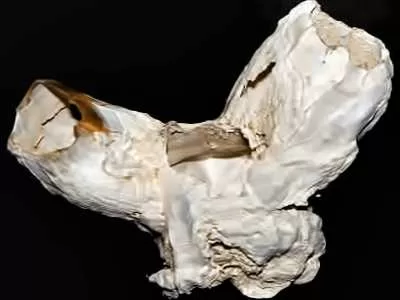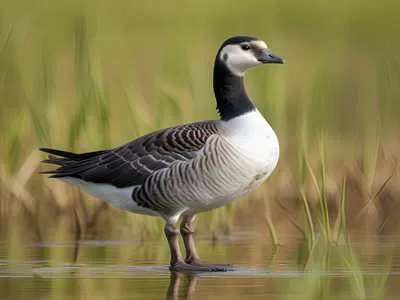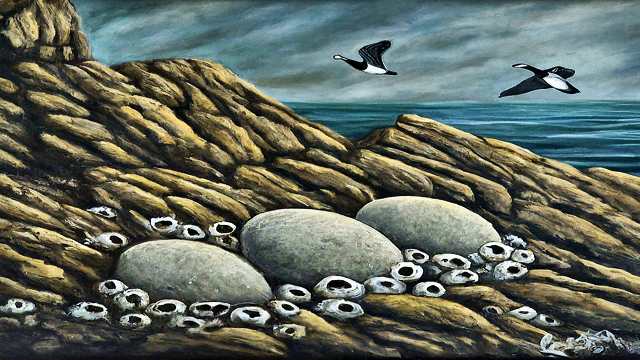In the realm of historical botany, few texts are as captivating as John Gerarde’s Great Herball (1597). This comprehensive work is filled with intriguing anecdotes and curious entries, but none is quite as peculiar as the one found in Chapter 167, dedicated to the enigmatic Goose Tree.
Gerarde himself describes it as “one of the marvels of our land (we may say of the world),” and he takes great care to assure readers of the authenticity of his claims, stating, “what our eyes have seen, and hands have touched, we shall declare.”
Goose Tree and Piel Island
Gerarde’s tale begins on a small island in Lancashire known as the Pile of Foulders, which we now call Piel Island. Located just south of the Furness peninsula, this island has a rich history. Originally named Fouldrey, the name derives from the Norse words for “fodder” and “island.” In 1127, King Stephen granted the island to Savignac monks, who later became part of the Cistercian order. They constructed a formidable red sandstone fortification, now known as Piel Castle.

Today, Piel Island is home to the Ship Inn, the only pub on the island, where the landlord is humorously referred to as the King of Piel. A unique tradition exists in the pub: anyone who sits in a large oak chair and buys a round of drinks for everyone present is dubbed a Knight of Piel, entitled to food and lodging if they ever find themselves shipwrecked on the island.
The Curious Creation of the Goose
Returning to Gerarde’s account, he describes how shipwrecks and driftwood wash ashore on Piel Island, where a peculiar “spume or froth” grows. Over time, this froth develops into shells resembling mussels, which eventually produce a mass that takes on the shape of a bird. Once it reaches a certain size, it falls into the sea, where it grows feathers and transforms into a creature larger than a mallard but smaller than a goose. This bird, known locally as the Tree Goose, is said to have black legs and a bill, and its plumage is spotted like a magpie. Gerarde claims that these birds are quite tasty, with one fetching a mere three pence.

Gerarde’s insistence on the truth of his story is notable: “for the truth heeerof, if any doubt, may it pleafe them to repair unto me, and I shall fatifie [satisfy] them by the teftimonie of good witneffes.” His vivid descriptions and claims invite readers to question the origins of such a fantastical tale.
The Barnacle Goose Connection
Interestingly, Gerarde’s observations about the Tree Goose tie into a broader historical context involving the barnacle goose. In medieval times, Pope Gregory famously circumvented Catholic dietary laws by declaring certain foods to be marine species. This allowed the barnacle goose to be consumed during Lent, as it was considered a type of shellfish due to its association with barnacles. The confusion surrounding the origins of these birds likely stemmed from their migratory patterns; few had ever witnessed them nesting or raising their young.
Gerarde’s description of finding “small, naked birds” and “some covered in soft down” on an old, rotten tree further complicates the narrative. It’s likely that he was observing a type of mollusk, which could easily be mistaken for embryonic geese due to their shape and appearance.
Gerarde and the Virginia Potato
In addition to his musings on the Goose Tree, John Gerarde was also the first English writer to describe the potato, which he referred to as the Virginia Potato to distinguish it from the sweet potato. He praised the potato as a nutritious food, stating it was “equal in goodness and wholesomeness” to other meats. Gerarde recommended various cooking methods, including roasting and boiling, often served with oil, vinegar, and pepper.
Conclusion: A Legacy of Curiosity
John Gerarde’s Great Herball is a treasure trove of historical knowledge, blending folklore, botany, and culinary history. The tale of the Goose Tree serves as a reminder of the rich tapestry of stories that shape our understanding of nature and food. As we explore these narratives, we gain insight into the cultural significance of plants and animals in our history. Stay tuned for more on the fascinating world of potatoes and their culinary potential!

